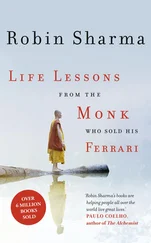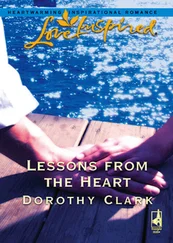James Watson - AVOID BORING PEOPLE - Lessons from a Life in Science
Здесь есть возможность читать онлайн «James Watson - AVOID BORING PEOPLE - Lessons from a Life in Science» весь текст электронной книги совершенно бесплатно (целиком полную версию без сокращений). В некоторых случаях можно слушать аудио, скачать через торрент в формате fb2 и присутствует краткое содержание. Жанр: Биографии и Мемуары. Описание произведения, (предисловие) а так же отзывы посетителей доступны на портале библиотеки ЛибКат.
- Название:AVOID BORING PEOPLE: Lessons from a Life in Science
- Автор:
- Жанр:
- Год:неизвестен
- ISBN:нет данных
- Рейтинг книги:5 / 5. Голосов: 1
-
Избранное:Добавить в избранное
- Отзывы:
-
Ваша оценка:
- 100
- 1
- 2
- 3
- 4
- 5
AVOID BORING PEOPLE: Lessons from a Life in Science: краткое содержание, описание и аннотация
Предлагаем к чтению аннотацию, описание, краткое содержание или предисловие (зависит от того, что написал сам автор книги «AVOID BORING PEOPLE: Lessons from a Life in Science»). Если вы не нашли необходимую информацию о книге — напишите в комментариях, мы постараемся отыскать её.
AVOID BORING PEOPLE: Lessons from a Life in Science — читать онлайн бесплатно полную книгу (весь текст) целиком
Ниже представлен текст книги, разбитый по страницам. Система сохранения места последней прочитанной страницы, позволяет с удобством читать онлайн бесплатно книгу «AVOID BORING PEOPLE: Lessons from a Life in Science», без необходимости каждый раз заново искать на чём Вы остановились. Поставьте закладку, и сможете в любой момент перейти на страницу, на которой закончили чтение.
Интервал:
Закладка:
Alfred came from an old Valais family that long owned a bank in Sion. When he was less than a year old his banker father tragically died during the great influenza epidemic of 1918. Much later a minor inheritance
let Alfred possess the sleek Bentley that he parked across the Cam on land adjacent to the school for the famed King's College boys’ choir. An even greater source of pride than his car was Albert's election to the British Alpine Club in 1950. His formidable ascents of the south face of the Taschhorn and the north ridge of the Dent Blanche led to an invitation to join the Swiss 1951 Everest reconnaissance expedition. Regretfully he had to decline, giving priority to his research efforts in the Molteno Institute that led, in 1952, to a research fellowship at King's. Climbing, however, always remained essential to his psyche. In the summer of 1954 he joined in the Alpine Club's reconnaissance of Pakistan's Rakaposhi, at almost eight thousand meters high one of the Karakoram's most daunting peaks.
Alfred Tissières braves an airy traverse of the Gilgit River in northern Pakistan in 1954.
After I left for Harvard, my successor as the Unit's geneticist was to be the South African-born Sydney Brenner. We first met when he was working for a Ph.D. at Oxford following medical training in Johannesburg. In the spring of 1953, Sydney was among those to have come to Cambridge to have a peek at our big molecular model of the double helix. He entered our lives more importantly, however, during the summer of 1954, when Francis and I were at Woods Hole on Cape
Cod, talking genetic codes with the Russian-born, big bang theoretical physicist George Gamow. Then learning bacterial genetics at Cold Spring Harbor, Sydney came to Woods Hole for several days, greatly impressing Gamow and Francis by his quickness to catch on to their ideas and to propose experiments to test them.Gamow, then a professor at George Washington University, was first drawn to the double helix through his reading in the summer of 1953 of our second Nature paper on the subject (“Genetical Implications of the Structure of DNA”). By early 1954, his seemingly wacky initial ideas had crystallized into a precise mechanics for the genetic code by which overlapping groups of three nucleotides coded for successive amino acids along polypeptide chains. On an early May 1954 visit to Berkeley, where George was on sabbatical, I proposed that we form a twenty-person code-seeking club, one member for every amino acid. George instantly reacted positively, much anticipating designing a tie and stationery for our RNA Tie Club.
Though there was never a convention of all its members, “notes” that circulated within the RNA Tie Club greatly advanced thought about genetic codes. The most famous of these notes, by Francis, in time would totally change the way we thought about protein synthesis. In January 1955 he wrote to the RNA Tie Club correctly suggesting that amino acids, prior to being incorporated in polypeptide chains, would attach to small RNA adaptors that in turn bind to template RNA molecules. For each amino acid, Francis postulated, there must exist a specific adaptor RNA (now called transfer RNA). In the absence then of any experimental evidence for small RNA, much less their chemical binding to amino acids, even Francis could not long remain buoyant about his adaptors. Six months were to pass before he was to regain a manic mood, but this time it was over a 3-D model for collagen that he and Alex Rich built over the summer of 1955.
After Alex returned in December to his job at the National Institutes of Health outside Washington, D.C., Francis and I focused for the winter of 1956 on the structures of small spherical RNA viruses, outlining how their cubic symmetry resulted from the regular aggregation of smaller asymmetrical protein building blocks. How their single long RNA chains were organized with their polyhelical protein
shells remained to be seen. Our last time as a team of two was at a Johns Hopkins University-organized symposium in mid-June 1956, entitled “The Chemical Basis of Heredity.” Upon arriving at the Hotel Baltimore, Francis jubilantly pointed out that we had been assigned adjacent rooms in the top-floor presidential suite.After that occasion staying at the top was to be a challenge we would have to face separately.
Remembered Lessons
1. Choose an objective apparently ahead of its time
Mopping up the details after a major discovery has been made by others will not likely mark you out as an important scientist. Better to leapfrog ahead of your peers by pursuing an important objective that most others feel is not for the current moment. The 3-D structure of DNA in 1951 was such an objective, regarded by virtually all chemists as well as biologists as unripe. One well-known scientist then toiling in DNA chemistry predicted that a hundred years would pass before we knew what the gene looked like at the chemical level. Before setting out, you need to figure out a new path by which to climb—or, even better, a new intellectual catapult that can potentially hurl you over crevasses seemingly too broad to be leapt over by experimentation. The model-building approach to the DNA structure in 1951 had the potential to let us get where we needed to go at a time when the more orthodox approach, limited to analyzing X-ray diagrams, was far from straightforward. Given Pauling's recent success using molecular modeling to find the a-helix, using this approach on DNA was far from outlandish; actually, it was a no-brainer.
2. Work on problems only when you feel tangible
success may come in several years
Many big goals are truly ahead of their time. I, for one, would like to know now where exactly my home telephone number is stored in my brain. But none of my colleagues who think about the brain yet know even how to approach this problem. We might do very well by asking how the cells in the much, much smaller fly brain are wired so as to recognize the odor of a specific alcohol—that would be getting us somewhere.
I feel comfortable taking on a problem only when I believe meaningful results can come over a three-to-five-year interval. Risking your career on problems when you have only a tiny chance to see a finish line is not advisable. But if you have reason to believe you have a 30 percent chance of solving over the next two or three years a problem that most others feel is not for this decade, that's a shot worth taking.
3. Never be the brightest person in a room
Getting out of intellectual ruts more often than not requires unexpected intellectual jousts. Nothing can replace the company of others who have the background to catch errors in your reasoning or provide facts that may either prove or disprove your argument of the moment. And the sharper those around you, the sharper you will become. It's contrary to human nature, and especially to human male nature, but being the top dog in the pack can work against greater accomplishments. Much better to be the least accomplished chemist in a super chemistry department than the superstar in a less lustrous department. By the early 1950s, Linus Pauling's scientific interactions with fellow scientists were effectively monologues instead of dialogues. He then wanted adoration, not criticism.
4. Stay in close contact with your
intellectual competitors
In pursuing an important objective, you must expect serious competition. Those who want problems to themselves are destined for the backwaters of science. Though knowing you are in a race is nerve-racking, the presence of worthy competitors is an assurance that the prize ahead is worth winning. You should feel more than apprehensive, however, if the field is too large. This usually means you are in a race for something too obvious, not enough ahead of its time to deter the more conservative and less imaginative majority. The presence of more than three or four competitors should tell you that your chance of winning is not only low but virtually incalculable since you are unlikely to have a detailed knowledge of the strengths and weaknesses of most of your competition. The smaller the field, the better you can size it up, and the better the chance you will run an intelligent race.
Читать дальшеИнтервал:
Закладка:
Похожие книги на «AVOID BORING PEOPLE: Lessons from a Life in Science»
Представляем Вашему вниманию похожие книги на «AVOID BORING PEOPLE: Lessons from a Life in Science» списком для выбора. Мы отобрали схожую по названию и смыслу литературу в надежде предоставить читателям больше вариантов отыскать новые, интересные, ещё непрочитанные произведения.
Обсуждение, отзывы о книге «AVOID BORING PEOPLE: Lessons from a Life in Science» и просто собственные мнения читателей. Оставьте ваши комментарии, напишите, что Вы думаете о произведении, его смысле или главных героях. Укажите что конкретно понравилось, а что нет, и почему Вы так считаете.












